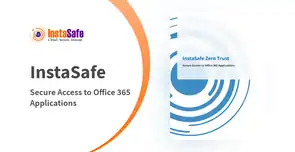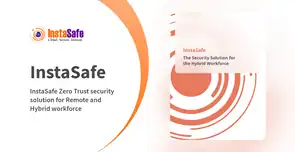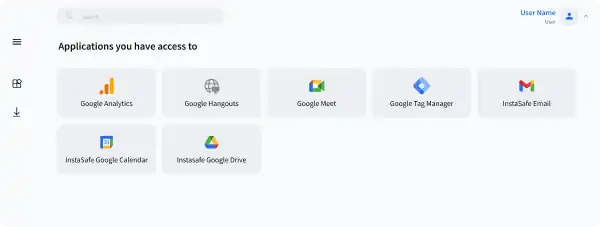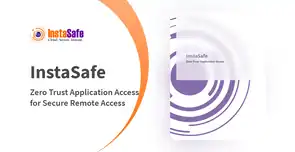Enable Secure DevOps Security, the Zero Trust Way
Enable secure collaboration amongst your DevOps team without forcing them to change how they work

Secure your DevOps applications and connections with InstaSafe
SSH Connections
InstaSafe ZTAA secures your SSH servers by securing any attempt to access resources from command lines with credential based authentication and authorization. Any access request is validated against configured access policies before being granted
Web and SaaS Applications
You can use Instasafe ZTAA to access your internal web based and SaaS applications like Jira, Wordpress, Jenkins, Gitlab. For every access request, InstaSafe assesses the identity of user and device and context of request before granting least privilege access
RDPs
Since Remote Desktops allow users to connect to a machine from a different machine, they are important for DevOps teams. InstaSafe ZTAA allows RDP access with additional layers of authentication through its inbuilt SSO and MFA capabilities
DevSecOps teams pipelines are dynamic and need to carry on their task uninterrupted, but at the same time there's a need to protect the increasing endpoints
To ensure compliance, it is imperative that DevOps pipelines are secured effectively. This requires addressing security concerns as an integral part of the Software Development Life Cycle (SDLC), from the early stages of design and development to the final stages of testing and deployment. By integrating security into the SDLC, organizations can identify and address potential security issues earlier in the development process, reducing the risk of data breaches and non-compliance. Ultimately, this approach helps businesses meet the necessary data privacy compliance requirements while also enhancing the overall security and reliability of their DevOps pipelines.
In many organizations, the use of security tools for DevOps is not yet a fully realized practice, leaving developers with the burden of securing their applications. As a result, developers may be granted administrator privileges to manage their development environments, which can create a potential security vulnerability. Attackers can exploit these privileges to move laterally around the network, gaining access to sensitive data or other applications.
VPNs can pose several security risks. One such risk is the exposure of IP addresses, which can potentially allow attackers to track or locate the endpoint devices. Additionally, VPN solutions can expose untrusted domains from legacy-based operating systems, which can result in multiple vulnerabilities. Attackers can take advantage of these vulnerabilities to launch various types of attacks, including malware infections and data exfiltration.
Identity management is critical in DevOps because it enables the secure management of user identities and access rights to the various systems and applications that make up the development environment. By integrating identity management into a DevOps security model, organizations can centralize identity and access management, reducing the risk of errors and unauthorized access. This approach can also simplify the management of user permissions and access levels, making it easier to enforce security policies and ensure compliance with industry regulations.
It is becoming increasingly important for DevOps teams to have access to critical resources from anywhere, at any time. However, traditional VPN solutions can introduce security and performance issues that can impact the productivity and efficiency of DevOps teams. VPNs can be slow and often require additional configuration and maintenance, which can slow down the development process. In addition, VPNs can introduce security risks, such as the exposure of IP addresses and the potential for data leaks.
In the absence of DevOps application security, organizations may experience a lack of visibility into who is accessing critical and sensitive applications or servers. Without proper security measures in place, it can be difficult to determine which devices or users are accessing specific applications or servers, leaving the organization vulnerable to unauthorized access and potential data breaches. This lack of visibility can also make it challenging to identify security threats and mitigate them quickly. As a result, it is critical to implement effective DevOps application security measures, including access controls, user authentication, and monitoring
Empower and secure your DevOps teams with InstaSafe
Access in Secure Environments
Access in Secure Environments
Access in Secure Environments
Access in Secure Environments
Access in Secure Environments
Access in Secure Environments
Enable secure connections from developers to authorised applications like Gitlab, while making them invisible to the external internet with DevOps application security. Create application specifc tunnels based on Zero Trust principles to create a secure containerised environment for developers to work in
Benefits of DevOps Security with Zero Trust Access
Secured Development Environment
Zero Trust access ensure right users accessing right applications without providing access to entire networks. It eliminates lateral attack movement of attackers.
Integrated security into DevOps
Getting security tightly integrated through all phase of Software Development Life Cycle (SDLC) without worrying about security and compliance issues.
Better visibility
Detailed reporting about user activity. A better overview of role based access policies, group creation, and password modification.
Solve your access challenges with InstaSafe
Improve your security posture and gain better control over your network with Zero Trust
 CASE STUDY
CASE STUDYSecure Access to Office 365 Applications using InstaSafe Zero Trust
Continue Readingarrow_forward WEBINAR
WEBINAREnsuring a Secure Work From Home Environment: Remote Access Security Best Practices
Watch Nowarrow_forwardWhat Our Customers Say on G2
InstaSafe acts like a natural extension to our network infrastructure.
With its clientless functionality, it works seamlessly in the background, and causes no latency issues whatsoever during usage. The additional benefits of very quick scalability and adaptability to almost any environment make InstaSafe a lucrative option

Ranjith P
Chief Manager ISG& IS Audit
Good to use, easy to manage Zero Trust VPN security tool for cloud and ERP applications
InstaSafe has been instrumental in supporting the Information Management strategy of my organization by providing a secure foundation for our hybrid network infrastructure. We have managed to easily extend always-on connectivity and secure access to our cloud and ERP applications with Instasafe Zero Trust Access. It is much faster than a VPN and much easier to manage.

Hariharan S
Vice President
Demystifying IT Security
We have been able to deploy InstaSafe’s solutions seamlessly across a diverse workforce. The interface is user friendly, which reduces the need for extensive training, and the solution is flexible in many ways, allowing for better integration with our existing infrastructure

Rishu P
Business Development Manager
Reliable, easy to set-up, and scalable solutions
InstaSafe simply stands out in terms of its dynamicity and adaptability to expanding cloud environments. I would recommend InstaSafe for any company in the retail sector.

Vaibhav S
Assistant Consultant
Best VPN solution, very quick setup & a great support team!
InstaSafe simply stands out in terms of its dynamicity and adaptability to expanding cloud environments. I would recommend InstaSafe for any company in the retail sector.

Sadanand H
VP IT Infrastructure & Governance
Frequently Asked Questions on DevOps Security
DevOps security is the practice of integrating security measures into the DevOps process to ensure that software development and deployment is done in a secure and compliant manner.
DevOps security is important because it helps to ensure that software development and deployment is done securely and that software is not vulnerable to security breaches. This helps to prevent data breaches, financial losses, and reputational damage.
Common DevOps security challenges include securing code repositories, securing infrastructure, managing secrets and access control, and ensuring compliance with regulations and policies.
The devops teams access a number of tools to power the CI/CD Pipeline. It is important to ensure that each of these applications are hidden from the internet as they can have vulnerabilities. The tools can be securely shared to the validated users along via the ZTAA
- Security
- Seamless access
- All applications over a single dashboard, respective where they are hosted
- Controlled (no copy/paste/record/screen share) access
- User Device approvals
- No user who needs to access has visibility into the application.
- Secure VPN replacement
- Having a controlled access to each of the Devops applications.
- Hidding Applications from internet.
- Seamless one access to all applications.
InstaSafe ZTAA is used to provide segmented application access by leveraging application specific tunnelling. In essence, it provides application access without giving network access. InstaSafe ZTNA, on the other hand, is used for very specific use cases that involve extending secure applications to thick client applications, and extend secure access to devices/applications at the IP layer, as opposed to access at the application layer for ZTAA.
Zero Trust Application Access
Secure Single Click Unified Access to SSH/RDP Servers and Applications hosted anywhere, by workforces located anywhere
Zero Trust Network Access
Leverage granular access policies, passwordless authentication, and visibility across your network with the ZTNA solution
Secure Cloud Access
Empower your Remote Workforce to seamlessly connect and work securely, from Anywhere.
VoIP Access
Extend Secure Remote Communication Channels for Remote VoIP users with a Zero Trust Solution
Are you ready to be a part of the Zero Trust Secure Access Revolution?



